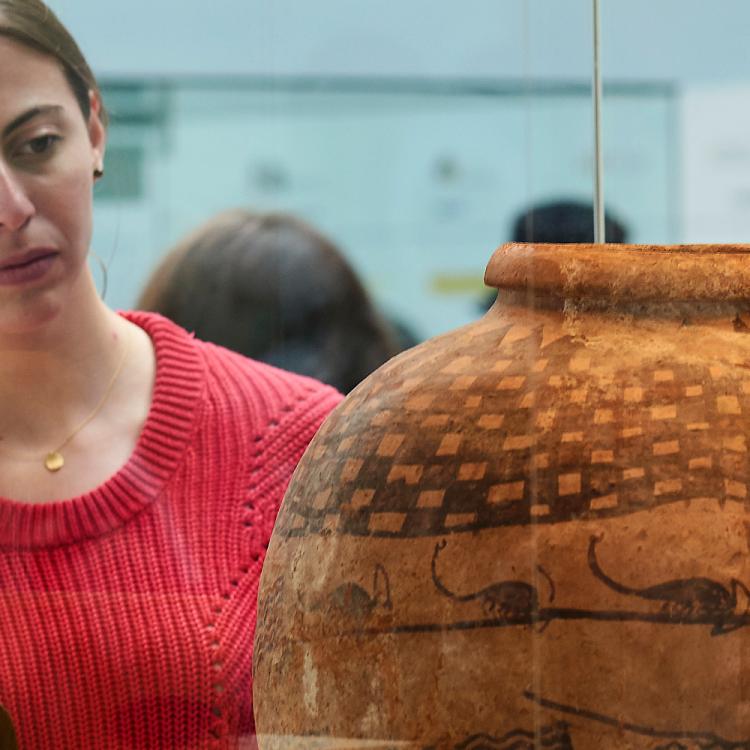Visiting the gallery
Opening times
Daily: 10.00–17.00 (Fridays: 20.30)
See full opening hours
Advance booking advised
Gallery audio guides
Listen on the Audio app, available on the App Store and Google Play.
Explore the beginnings of ancient Egyptian civilisation, which developed along the Nile from about 11000 BC.
The annual flooding of the Nile created fertile land ideal for growing crops. Rapid advances in technology and social organisation during the fifth millennium BC produced a material culture of increasing sophistication.
Toward the end of the Predynastic period, (about 3300 BC), regional rulers began competing for power and territory. This conflict ultimately led to the unification of Egypt under one king at about 3100 BC.
The strong central control and increase in wealth led to dramatic achievements in architecture, writing and fine goods, culminating in the building of the Great Pyramids of Giza in about 2600 BC.
Take a virtual tour
Go for a digital walk around Room 64 to see objects from Early Egyptian life. Can you find five 10 animal-themed objects?
Gallery facts
- Much of early Egypt was populated by small farming communities living along the Nile Valley.
- Powerful city states such as Hierakonpolis and Abydos in the south played a significant role in defining a distinct Predynastic culture, which laid the foundations for the later pharaonic state.
- King Narmer was the most famous king credited with the unification of Upper and Lower Egypt.
- The first royal tombs were built in the Upper Egyptian desert at Abydos, 56 miles (90km) north of Luxor.
- Funerals at this point of Egyptian history were simple and didn't involve mummification, a practice that began about 2500 BC.
- Egyptians hieroglyphs were invented about 3200 BC, in the first place for the purpose of administration, and were in use for almost 4,000 years.
Early Egypt timeline
About 8000 BC
The Predynastic period
About 4000 BC
The Predynastic period – the Naqada I period
About 3200 BC
The Predynastic period – the Naqada IIIA2 period
About 3100 BC
The Predynastic period – the Naqada IIIC1 period
About 3050 BC
The Early Dynastic period – the 1st Dynasty
About 2890 BC
The Early Dynastic period – the 2nd Dynasty
About 2750 BC
The Early Dynastic period – the 3rd Dynasty
About 2580–2560 BC
The Old Kingdom – the 4rd Dynasty
Accessibility
- Some objects in this collection feature on the British Sign Language multimedia guide. This resource is temporarily unavailable. You can access a selection of BSL films on your own device.
- Some objects in this collection feature on the audio description guide, available on Soundcloud.
- Step-free access.
- View sensory map.
Visit Accessibility at the Museum for more information.











